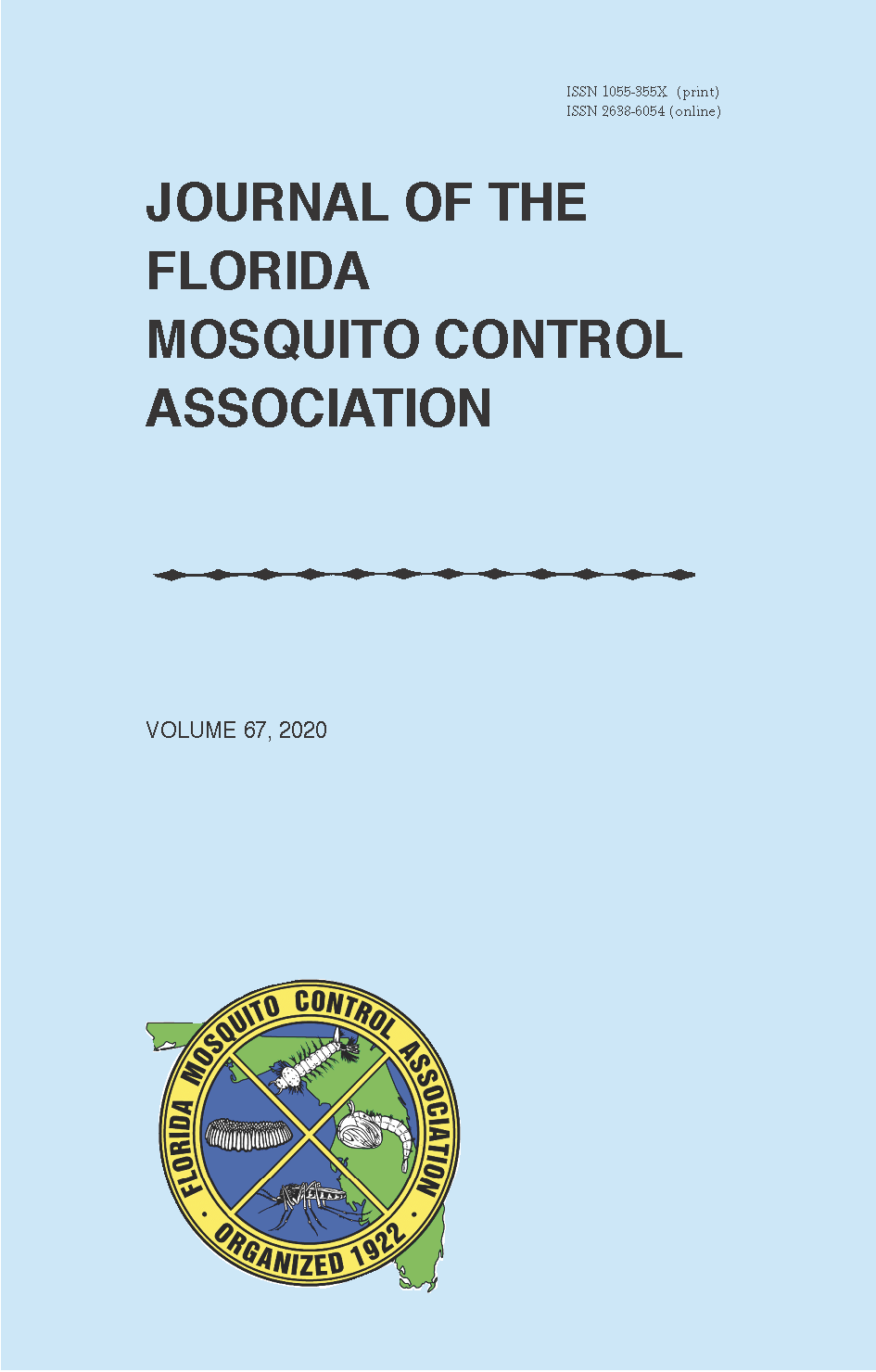LABORATORY EVALUATION OF BORIC ACID SUGAR BAITS AGAINST IRRADIATED AEDES AEGYPTI
DOI:
https://doi.org/10.32473/jfmca.v67i1.127640Abstract
The use of attractive toxic sugar baits (ATSBs) is a new paradigm in mosquito control. ATSBs kill both female and male mosquitoes attracted to sugar feed on a sugary solution containing a toxic substance such as boric acid. The impact of boric acid sugar baits on irradiated and non-irradiated Aedes aegypti was evaluated in the laboratory to determine any difference in mortality between the two groups. The mortality rates from the toxic sugar baits in both irradiated with 50 Gy and non-irradiated groups were highly significantly different, compared to those of corresponding control groups (t=6.916, p <0.0001 and t=6.451, p<0.01, respectively). Irradiated Ae. aegypti were not significantly different in mortality rates from non-irradiated counter parts after 24 and 48 h exposure to toxic sugar bait (t=0.576, p=0.578 and t=0.642, p=0.535 respectively). There was no significant difference in mortality caused by toxic sugar baits between the two sexes (t=0.595, p=0.869 and t=0.169, p=0.869 for irradiated and non-irradiated groups, respectively). The mean percent mortality after 48 h of exposure to toxic sugar baits was 43.3% for irradiated mosquitoes and 38.6% for non-irradiated mosquitoes. Mortality rates were significantly higher during second 24 h period in both irradiated and non-irradiated groups (t=-6.612, p<0.01 and t=-5.278, p<0.01 respectively). The study suggests that the toxic sugar bait approach could not be used within a sterile insect technique program to reduce the wild male population to increase the chances of wild females mating with irradiated males.

